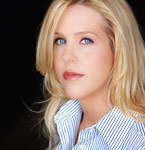Kristin Luck
I recently connected with my good friend and fellow researcher, Su Midghall. We were discussing our upcoming speaking engagements and Su mentioned she’d be speaking to a group of young women in business. “They’ve asked me to speak about the success of my business,” Su said, “but I’m going to speak about my failures instead.” Why? Su reasoned that likely all these women have heard about from previous speakers are successes – when what we really need excel at managing, both in life and in business, is failure.
That brief conversation with Su got me thinking about my own failures. Most of us only see success. Go to my LinkedIn profile and you’ll see a smiling face and a list of accomplishments and recommendations. What don’t you see? Along the way to that list of accomplishments, I left a job I loved for a job that made me miserable. I suffered through an unhealthy business partnership that I didn’t know how to leave. I launched a business and a product that suffered so many setbacks, it almost didn’t get off the ground. I’ve interviewed for jobs I loved but didn’t get offered. In my personal life, I’ve failed greatly at both tending to my garden and my relationships.
The upshot? Along the way I’ve gotten better. I’ve honed what I’m good at, figured out who I want to work with, and managed to build a career and a life around my strengths. I’ve taken product ideas that didn’t work and created new products that did. I’ve hired a gardener to combat my black thumb. I’m in a solid relationship and I’ve cultivated a tight circle of family and friends. We fail, we learn, we course correct (and, sometimes, we fail again). Even the word “success” is derived from the Latin word “succedre”…to come after. After what, you may ask? Failure.
Since I’ve seriously started assessing my own failures, and how important they’ve been in my own successes, I’ve been noticing failure everywhere. Pravin Shekar, Kreator-in-Chief at Krea, highlighted some of his key failures at a recent AMSRS conference in Sydney. At the ESOMAR Annual Congress in Istanbul, guest speaker (and chess champion) Gary Kasparov noted “trying to avoid failure- we are doomed to fail. Risk and failure are steps to success.” Researchers at the University of Birmingham in England found that giving up could make you more likely be successful in the end and National Geographic ran an eight page article in their September publication, highlighting failures in exploration, stating that “Even at their most miserable, failures provide information to help us do things differently next time. ‘I learned how not to climb, the first four times I tried to summit Everest,’ says alpinist Pete Athens, who’s reached the world’s highest peak seven times. ‘Failure gives you a chance to refine your approach. You’re taking risks more and more intelligently.’”
A few years ago I was invited to a small gathering with Richard Branson (yes, THE Richard Branson) where he discussed his successes, until someone in the group asked him to highlight his greatest business failure. Branson is known as a business man who never lets a failure pass without turning it into a stunning commercial reversal. Or at least ensuring that is how it’s perceived. He was forthcoming about his failed attempts to release a Virgin Cola bottle shaped like Pamela Anderson (which was apparently so top heavy that the bottle kept tipping over).
Fast Company recently highlighted Fab.com CEO Jason Goldberg, who has been called the next Jeff Bezos. Goldberg managed to drum up $325M in funding for Fab, even after the crash and burn of his first company, Jobster, which vaporised $48M in investor capital. How did he do it? Transparency. Many of us, myself included, have spent years trying to gloss over failures, afraid of what others might think or their impact on our ability to succeed. However, transparency breeds understanding and growth. When we acknowledge our failures, we open ourselves up to new conversations about what didn’t work and we create opportunities for learning.
Unfortunately our tribe, researchers, are some of the most reluctant to admit to failure, or even expose ourselves to the possibility of it – in large part because there is so much riding on the data we produce. This puts us in an awkward position. How do we grow as an industry if we’re so fearful of failure that we’re reluctant to innovate and change? Emerging methods like mobile, cross platform research, survey stitching and neuro are regularly discussed, spoken about, criticised and editorialised, but still rarely used. With explosive growth in emerging markets, rapid evolution of technology and an increasingly dissatisfied and unengaged respondent pool, we are reaching a tipping point. At what point are we forced to evolve?
Clients, as advocates for new product development, are a critical component of our evolution as an industry. When we launched online movie trailer testing at OTX in 2000, we couldn’t have succeeded without Dan Rosen, then the head of research for Warner Bros. Dan was a fearless advocate for online and he truly believed that, although our methods weren’t perfect, this new research method was going to be an industry game changer. He was right, but it was only because we had Dan standing with us, ready to accept failure as a cost of doing things differently that we were able to ultimately succeed. We failed, we refined, we succeeded. Similarly, I’m encouraged to see firms like General Mills and their mobile research innovator, Andy Dybvig. Andy is a thought leader for the General Mills Global Consumer Insights function- responsible for leading the group’s transition from traditional online and in-person research methods to mobile. Andy is, so far as I’ve experienced, absolutely fearless when it comes to mobile and I’m encouraged that a firm as large as General Mills is playing a key role in the evolution of our industry.
So how do we get more comfortable with failure? Be bold. Practice transparency. Trust and engage with your clients as partners and advocates. In the words of Samuel Beckett, “Try again. Fail Again. Fail better.”




2 comments
An interesting topic, thanks for highlighting it. I have a slightly different take – that we are trapped in stultifying narratives that have little bearing on what people really go through. Which includes – if I may – telling stories about successful people (Dyson) who just kept on chipping away, for ages, until they succeeded. This to me doesn’t resonate because it smacks of cliche and Hollywood happy ends.
My own preference is for a different dichotomy – honest versus dishonest, as they relate to authenticity and that itself relates to resonance. Honesty can be about anything, success of or failure. From the heart, to quote Chet Baker.
I am interested in success stories if (for example) the role of chance, and waywardness or even plagiarism were incorporated authentically. Failure stories are only interesting – I would argue – if they reveal complexities of how things move forward, in a wayward rather than ridiculously linear pattern. Prof. John Kay on obliquity is fascinating. Failure per se is not necessarily interesting.
In any context, honesty comes with a whole shopping basket of risk, and makes the teller vulnerable.
As we are still in transition mode between shareholder capitalism and stakeholder business concepts, I would sympathise with anyone who sticks to the sunny side of success narratives. The downside is of course the impact this has on people listening to a potentially saccharine and less than 100% revealing narrative….zzzzzzz.
Great post. btw my recollection of Beckett is more in the line of “Can’t go on. I’ll go on” – ie hardly finding success through failure. Martin Luther “Hier stehe ich, ich kann nicht anders” would be my suggestion.
Great article and I agree
In fact made me think of one of the stories I tell – in this case about James Dyson and thinking and doing things wrong…
James Dyson likes to do things “wrong”.
While vacuuming his home, he became frustrated with
the lousy suction of his vacuum cleaner. The bag and filter
clogged too quickly, reducing the suction power to a point
where he thought it hardly worked at all. Dyson decided
enough was enough and he had to do something about it.
Over 15 years, he built 5,126 prototypes before he found
the one that worked to his satisfaction. What took him so
long? His answer would be that it took him ages to think of
“wrong-doing”.
He explains: “When I was doing my vacuum cleaner, I started
out trying a conventionally shaped cyclone, the kind you see
in textbooks. But we couldn’t separate the carpet fluff and dog
hairs and strands of cotton in those cyclones. It formed a ball
(extract from my book The prisoner and the Penguin …and 75 other modern marketing stories